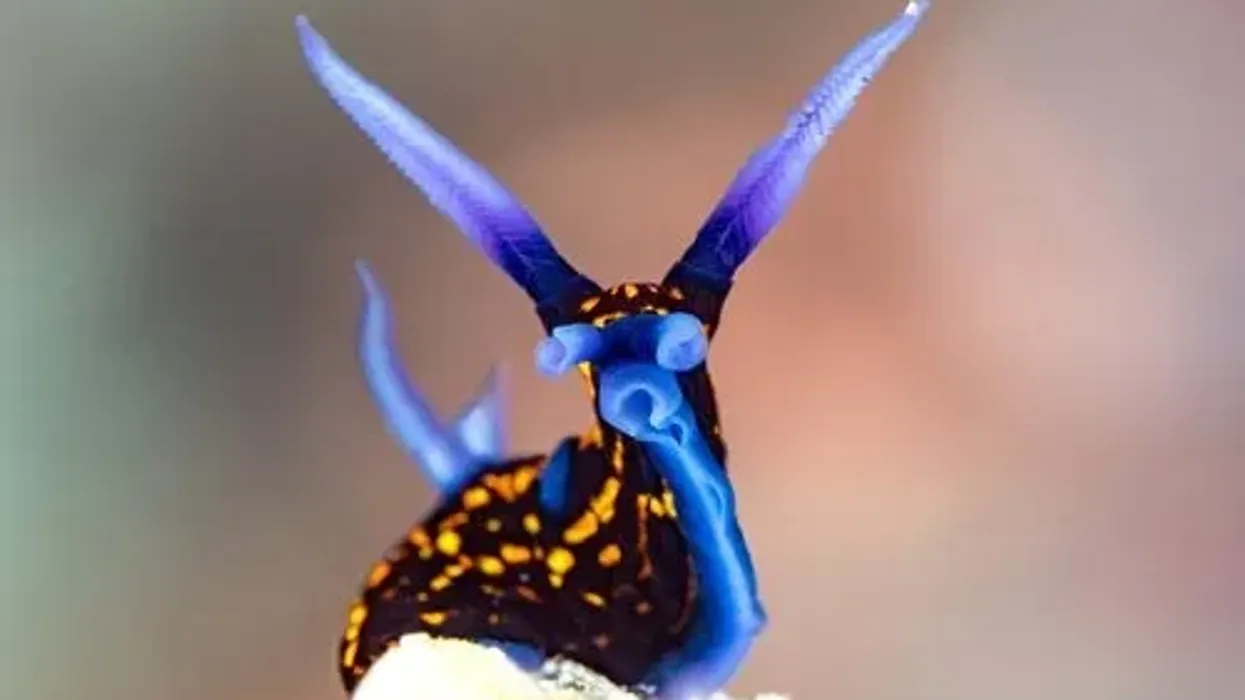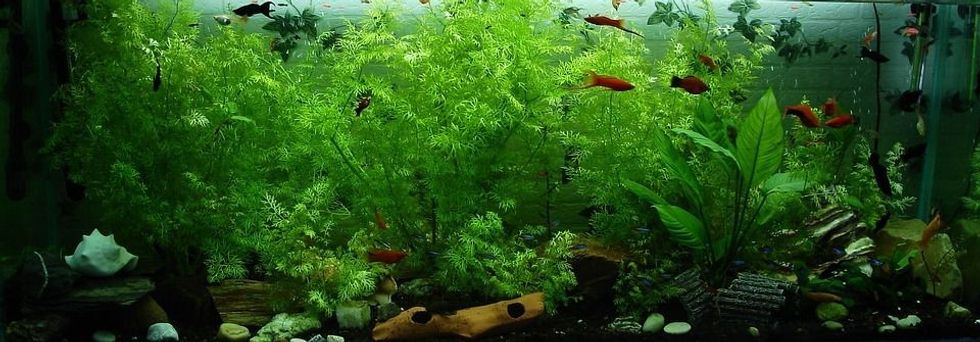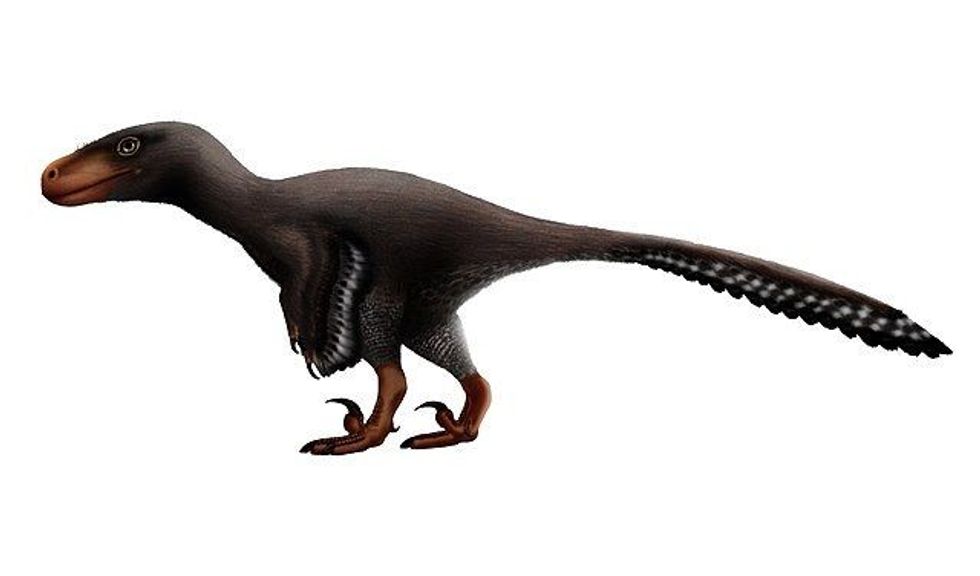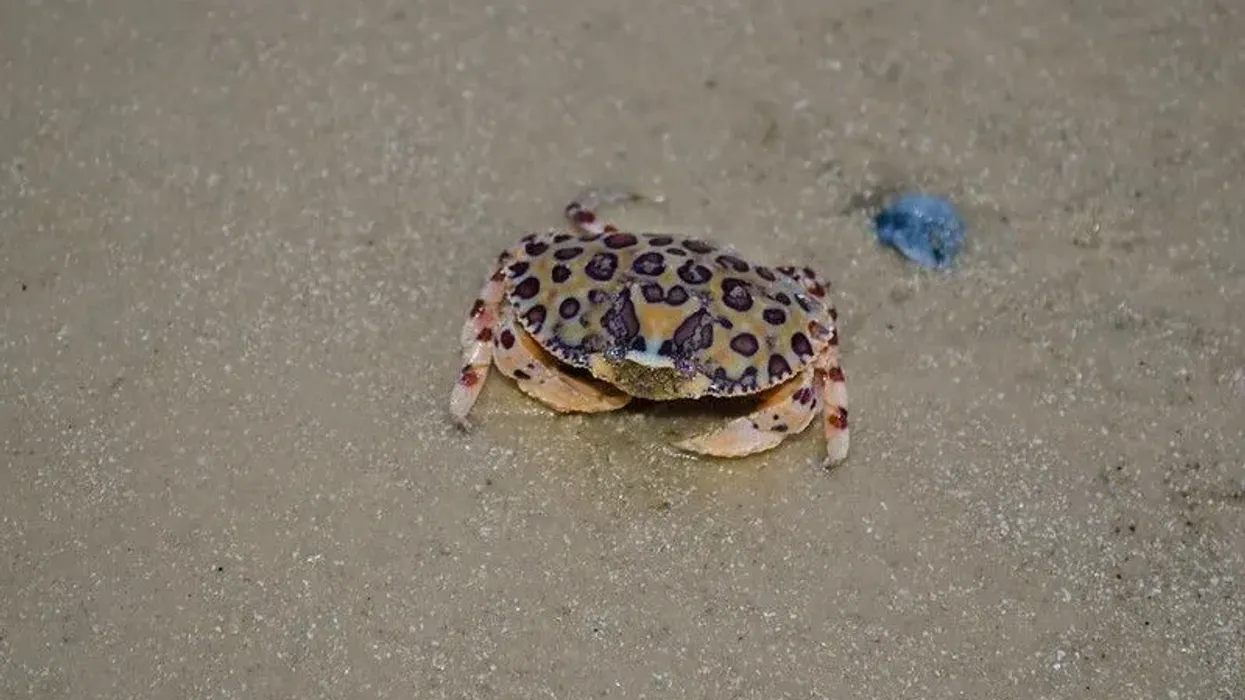Are you a fan of marine animals that are brightly colorful? Check out the Nudibranchia and you will definitely be delighted.
These marine animals are soft-bodied gastropods that live in the seas and oceans. They can be found on the seafloor or on top of a coral. And thus we can say that coral is one of its primary habitats.
Some of these animals have toxins in them and are thus poisonous. However, others feed on the stinging cells of jellyfish and store the toxins on their body.
Nudibranchia hatches from eggs and develops in a larval stage. In the larval stage, they are independent swimmers and look for food. However, during this larval stage, they are devoid of any sex organs in their body.
They don't have a prominent gill on their body and thus they breathe through the skin of their body. As a result, their skin is called the naked gill or gills.
All nudibranchs like dorid nudibranchs or aeolid nudibranchs don't have gills and thus breathe through their skin. The Flabellina iodinea aka Spanish shawl is a species of nudibranch that is extremely beautiful. These nudibranchs are called Spanish shawls as they vividly resemble a Flamenco dancer when they swim.
Check out this article to know more about lettuce nudibranch, Blue Dragon nudibranch and more. If you find this article interesting then do check out atlas beetle and stag beetle.
Nudibranch Interesting Facts
What type of animal is a nudibranch?
Nudibranchs are considered sea slugs which fall under the phylum Mollusca.
What class of animal does a nudibranch belong to?
Nudibranchs fall under the class of Gastropoda of the Animalia kingdom.
How many nudibranches are there in the world?
The planet Earth is home to more than 2,000 species of nudibranchs. Since the number of species is huge in number there is insufficient data as to how many Nudibranchs are there in the world.
Since their conservation status is Not Evaluated, we can assume that there is an abundance of these species of animals on our planet based on the number of species.
Where does a nudibranch live?
Nudibranchs are a type of gastropod that occurs all across the globe. These marine animals are inhabitants of the seas and oceans and are found on the surface of substrates or atop a coral.
They are found in all the major seas and oceans of the world. Be it the Arctic sea or the Antarctic ocean, or the Pacific Ocean or the Indian ocean.
What is a nudibranch's habitat?
Nudibranchs are gastropods that are found usually in the temperate and tropical waters of all major oceans and seas of the world. As they are marine animals found in these aquatic bodies, the nudibranchs can be identified as the species of animals that live in the saltwater habitats.
These gastropods are found in various depths of the sea.
They can be found at a depth of 2300 ft (700 m) to a record depth of around 8200 ft(2.5 km). These animals can be found walking on substrates or any substrata be it of living or non-living matter and thus can also be found on sea or ocean floors.
Who do nudibranches live with?
All the species of nudibranch are solitary animals and they rarely move from one place to another. They avoid groups and stay alone. Since they have a tendency of eating other nudibranchs, it can be assumed that it is the main reason why they avoid staying in groups.
How long does a nudibranch live?
These sea slugs, that is Dorid nudibranchs that have numerous colors on their body, have a very small lifespan in comparison with other marine animals or molluscs. They remain alive for only a year in the sea.
How do they reproduce?
Nudibranch species are animals that are hermaphrodite in nature. These animals contain both the male and the female reproductive organs.
Being a hermaphrodite has many advantages as they can easily mate with any mature nudibranch once they attain sexual maturity. The reproductive organs and openings are found on the right side of the body of a nudibranch.
These animals are incapable of self-fertilization and thus will always require a partner for reproduction and mating.
Like the majority of animals, before the process of mating, rituals like courtship dance takes place and cross-fertilization takes place among two mature adult nudibranchs. The eggs are usually coiled or in the shape of a spiral.
Once the eggs hatch, the larvae, complete with a shell, come out and swim on their own. Finally, with the passage of time, they settle on the floor of the sea or ocean and become an adult, shedding their shell in the process.
What is their conservation status?
According to the International Union for Conservation of Nature or IUCN Red List, the nudibranch is Not Evaluated. However, some of the nudibranch species are facing numerous threats due to climate changes and habitat loss.
Since a majority of their livelihood depends on corals, the destruction of the corals plays an active part in threatening the survival of the nudibranch species.
Nudibranch Fun Facts
What do Nudibranches look like?

Like a majority of mollusks, the nudibranch species showcase external bilateral symmetry. Bilateral symmetry means that when the body of the species is cut vertically through the middle, it results in two equal halves that are the exact mirror image of one another.
Nudibranchs showcase a wide array of colors on their body. Since they are hermaphrodites, they have both the male and female reproductive organs which are present on the right side of their body. Many nudibranchs have appendages that contain venom in them.
A radula is also found in their mouth that helps in feeding. Despite having poor eyesight they can, however, distinguish the difference between light and dark.
These sea slugs can often be found with a shell in the larval stage, while adults are shell-less. They have tentacles on their head with which they can perceive the senses of smell, touch, and taste. The rhinophores also help in distinguishing colors.
These animals are devoid of any gills and thus breathes through their skin. These animals showcase a wide range of colors.
How cute are they?
These soft-bodied animals are vividly colorful and thus can be found adorable and can appeal to anyone. The colors of their body are bright and can be found in the shades of red, blue, bright yellow, flashy pink, or deep green. However, you should be very careful when dealing with these animals.
How do they communicate?
These animals communicate with one another through the help of chemical signals which are secreted in the water. Special hormones help them to understand the presence of food in their vicinity. The rhinophores help them in communicating. These retractable tentacles help in sensing chemicals and their stimuli.
How big is a nudibranch?
These animals are quite average-sized in comparison to other similar animals of their respective families and phyla. Nudibranchs can be of a length of up to 24 in (58 cm) approximately.
Some species of nudibranchs are quite tiny, looking like little cells and measuring barely 0.16 in (4 mm). Nudibranchs seem to be quite small when compared to a few species of sea sponges, which may grow up to 3.3-6.6 ft (100-201 cm) in length.
How fast can a nudibranch run?
The nudibranch is an extremely slow animal and they don't move fast at all. They can be seen moving on top of substrates on the ocean floor at a slow pace.
Since they are solitary animals and are also hermaphrodite in nature they don't have the need to move from one place to another for mating. As for gathering food, they are surface feeders and can easily feed on animals and plants from the sea and ocean floor.
How much does a nudibranch weigh?
In comparison to their size, the nudibranch species can be a bit heavy. Despite being soft-bodied as well as being invertebrates they can weigh around 3.3 lb (1.5 kg) approximately.
What are their male and female names of the species?
There is no distinct name that male and female members of nudibranchs can be identified with. Moreover, since these animals are hermaphrodites, each organism contains both the male and female reproductive systems in them. As a result, the conventional way to call these animals is to define them with their actual name, nudibranch.
What would you call a baby nudibranch?
There is no distinct name by which a baby nudibranch can be identified or referred to. However, these animals after being born from eggs develop into the stage of larvae. So, the small baby nudibranch can be termed as larvae.
What do they eat?
Nudibranchs are carnivorous invertebrates and they eat other sea sponges for food. The main diet of these species consists of a wide variety of sea sponges along with barnacles and sea anemones.
The mouth consists of a radula which is a tongue-like organ whose chief purpose is to help them to eat their prey. These animals prey on different types of sea sponges based on their geographic location as well as their habitat.
Are they poisonous?
Yes, few species of nudibranch are poisonous in nature. However, some non-poisonous nudibranchs execute behavior that makes them seem poisonous in order to deter their predators.
These sea slugs also have the special ability to acquire venom and toxins from other animals, storing them in the rear portion of their body, thereby making them poisonous in the process. This usually happens when they're devouring the stinging cells of hydrozoids or when they feed on jellyfish.
They aren't, however, harmful to humans. Only those like the Glaucus atlanticus may be harmful.
Would they make a good pet?
Few dorid and aeolid nudibranchs can be kept as pets in your aquarium. The Berghia nudibranch is one such example that can be a good pet.
These animals should be kept exclusively in reef aquariums and proper care must be taken to make it a suitable habitat for them.
Most nudibranchs don't survive as pets and it is extremely difficult for them to breed in a closed enclosure as their eggs can't survive. Moreover, since these animals have a very short life span of just a year, it is best to leave them out in the wild.
Did you know...
The etymology of the word nudibranch has its roots deep in the Latin and Greek languages. The name is derived from the word 'brankhia' which in Greek means 'gills' and 'nudus' which means 'naked' in Latin.
All nudibranchs are good floaters and they float in an upward position on the surface of the sea. However, the neustonic Glaucus atlanticus nudibranchs are one such species that has the peculiar ability to float in an upside-down format.
The Cephalopyge trematoides is known to be an excellent swimmer and can even swim in a water column.
What is the difference between a sea slug and a nudibranch?
Though dorid and aeolid nudibranchs are a type of sea slug, they are different from other sea slugs. Since sea slugs refer to all common animals of Gastropoda like snails and slugs, it can be hence inferred that all nudibranchs are sea slugs, however, not all sea slugs are nudibranchs.
How to pronounce nudibranch?
The ideal way to pronounce nudibranch is by using proper phonetics. Nudibranch is usually pronounced as noo-de-brank.
Here at Kidadl, we have carefully created lots of interesting family-friendly animal facts for everyone to discover! Learn more about some other arthropods including water beetle, or longhorn beetle.
You can even occupy yourself at home by drawing one on our Nudibranch coloring pages.










